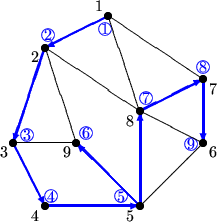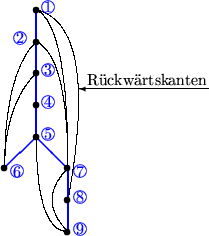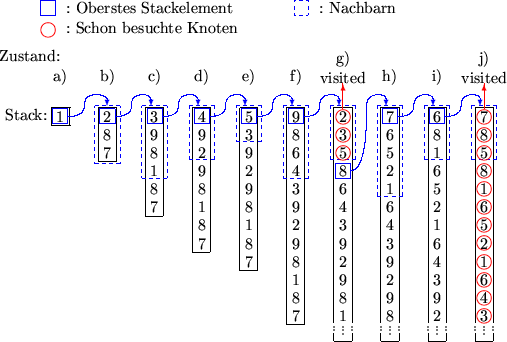while ![]() unvisitet v do
r:= pick(random) unvisited node;
push r onto stack;
while stack
unvisitet v do
r:= pick(random) unvisited node;
push r onto stack;
while stack ![]() do
v:= pop the top element;
if not visited v then
mark v visited;
push all neigbour's of v onto stack;
DFS_Ops(v);
fi
od
od
do
v:= pop the top element;
if not visited v then
mark v visited;
push all neigbour's of v onto stack;
DFS_Ops(v);
fi
od
od


